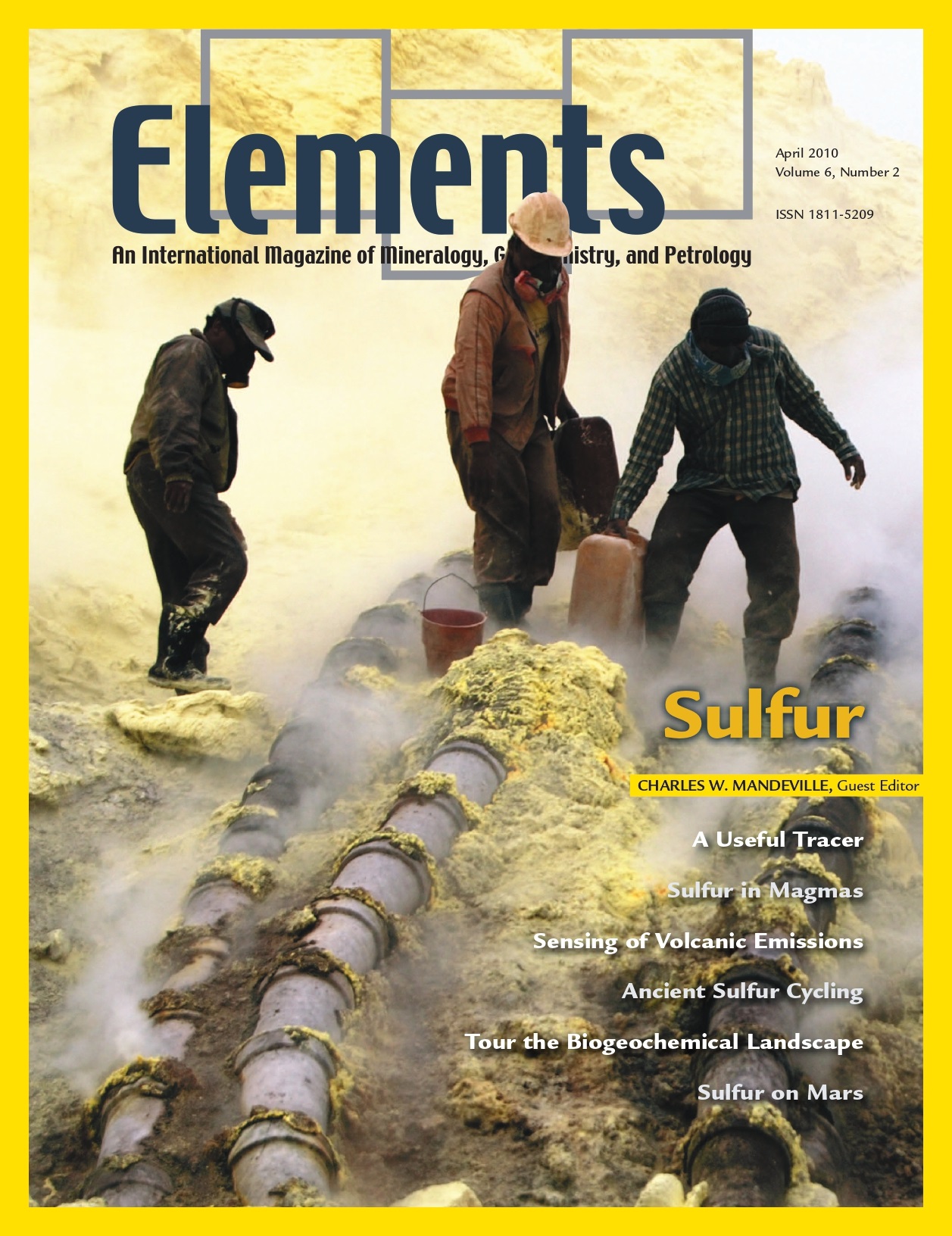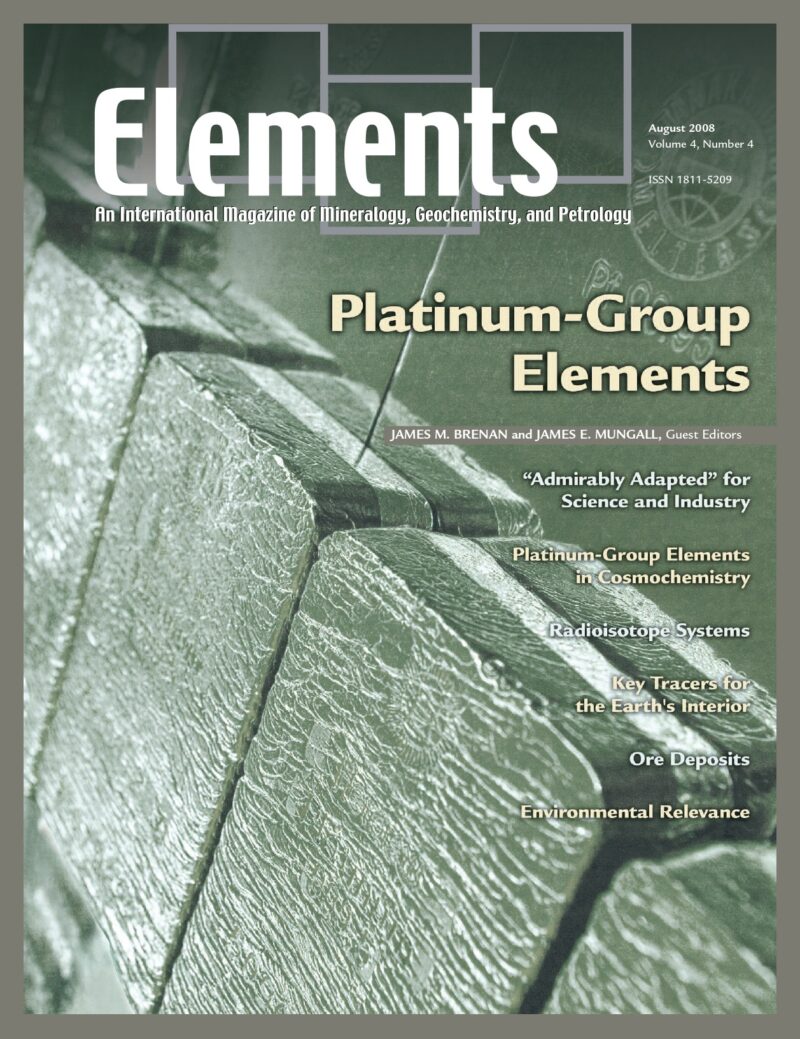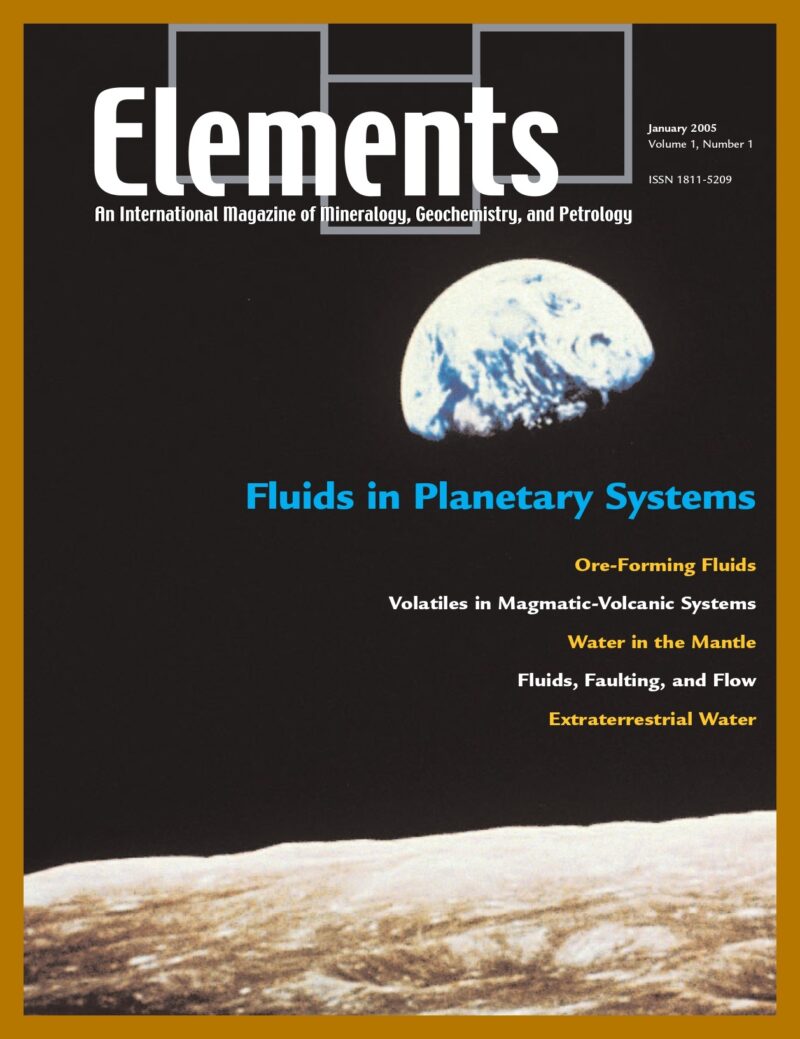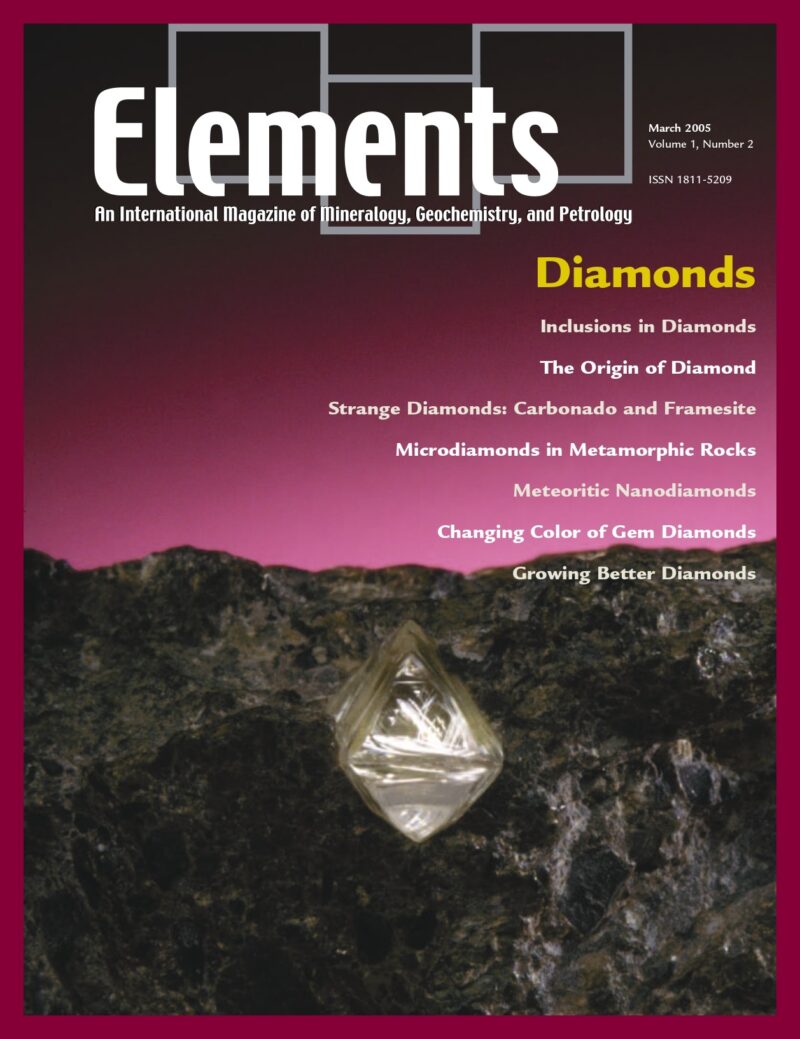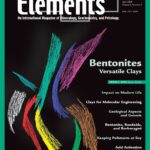
Bentonites – Versatile Clays, April 2009, Vol. 5, No. 2
June 28, 2024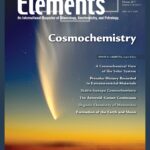
Cosmochemistry, February 2011, Vol. 7, No. 1
June 28, 2024Sulfur, April 2010, Vol. 6, No. 2
$20.00
This issue of Elements focuses on the geochemistry of sulfur in high-temperature, low-temperature, and biogenically mediated processes over a wide range of scales, environments, and time intervals. Sulfur’s multiple valence states (S2to S6+) allow for its participation in a large variety of geochemical and biogeochemical processes.
Sulfur
April 2010, Vol. 6, No. 2
This issue of Elements focuses on the geochemistry of sulfur in high-temperature, low-temperature, and biogenically mediated processes over a wide range of scales, environments, and time intervals. Sulfur’s multiple valence states (S2to S6+) allow for its participation in a large variety of geochemical and biogeochemical processes. Sulfur may be one of the light elements contained in the Earth’s core and may have been crucial in core formation. Sulfur is an essential component in all life on Earth. Sulfur geochemistry continues to be used in delineating the early evolution of Earth’s atmosphere and hydrosphere, as a monitor of volcanic SO2 and H2S, and as a tracer of anthropogenic sources. Recent advances in the use of multiple sulfur isotopes (32S, 33S, 34S, and 36S) and in situ isotopic measurements will allow sulfur stable isotopes to develop as vital tracers in the Earth and planetary sciences, with applications to inorganic and biogenic processes.
Why You’ll Love Elements Magazine:
- Expert Contributors: Articles written by renowned researchers in the field of geoscience.
- Engaging Content: Join a community of readers who are passionate about Elements.
- Exceptional Quality: Each issue is printed on high-quality paper with stunning visuals and detailed illustrations that bring complex scientific concepts to life.
Order your copy of the April 2010 issue of Elements magazine today and explore the complexities of sulfur.
Related products
-
Platinum-Group Elements, August 2008, Vol. 4, No. 4
$20.00The geoscientific and economic significance of the PGE is immense. Due to their extreme siderophile and chalcophile behaviour, the PGE are highly sensitive tracers of geological processes involving metal and sulfide phases.
-
Fluids in Planetary Systems, January 2005, Vol. 1, No. 1
$20.00Water and other geofluids play an important role in the geochemical and rheological evolution of the Earth and other bodies in the solar system. These fluids are responsible for the formation of hydrothermal mineral deposits, affect eruption behavior in volcanic systems and the geophysical properties of the mantle, and significantly affect the way in which rocks deform and fracture.
-
Diamonds, March 2005, Vol. 1, No. 2
$20.00Diamond, the fascinating ultrahard mineral, is the focus of considerable interest and scientific research. Recent advances particularly relevant to geoscientists include: diamond as a recorder of Earth processes from the perspective of inclusions, chemistry, and conditions of formation; synthesis for research applications and processing to modify color and physical properties, important to diamond gems and anvils; the implications of nanodiamonds from meteorites.

